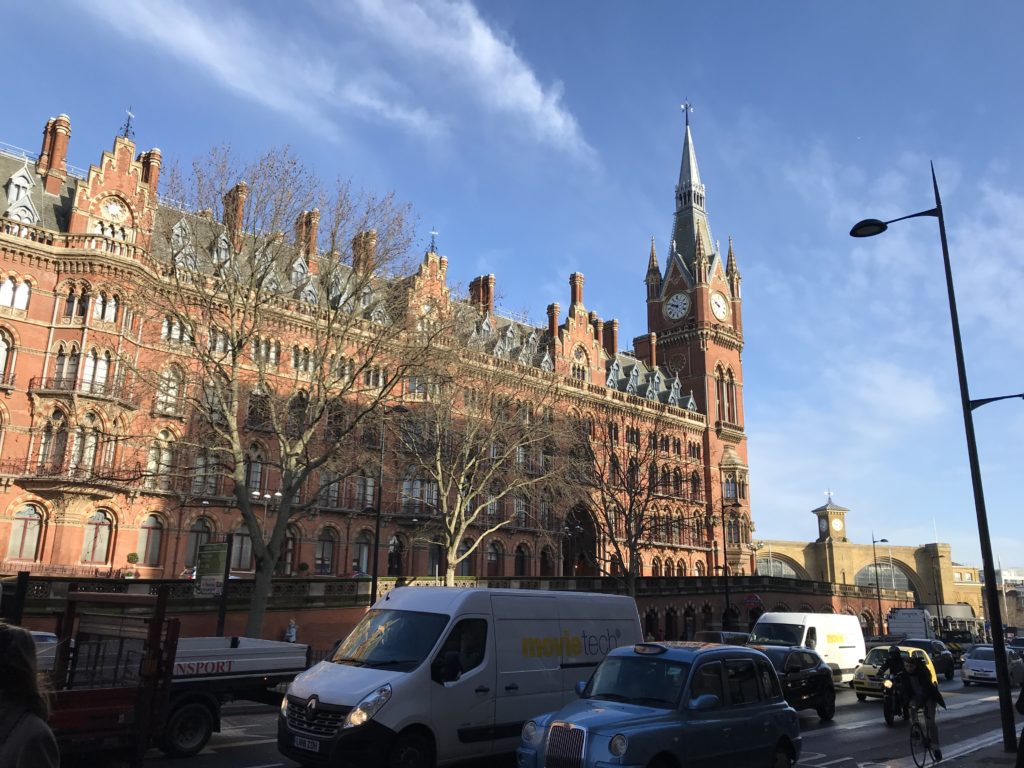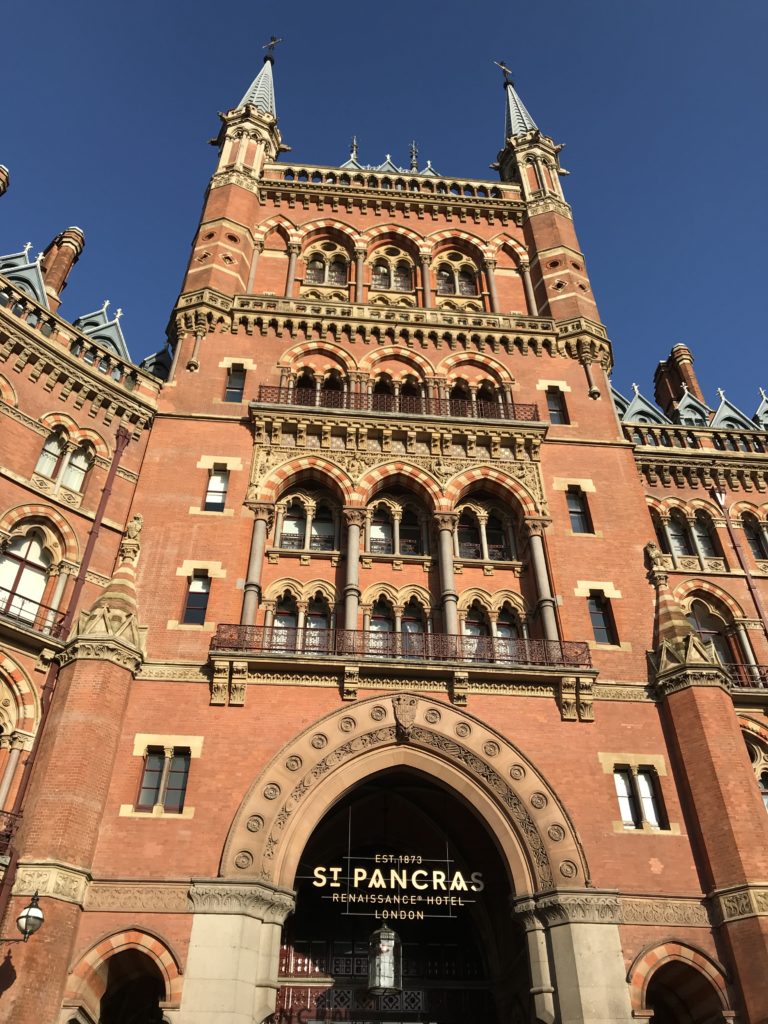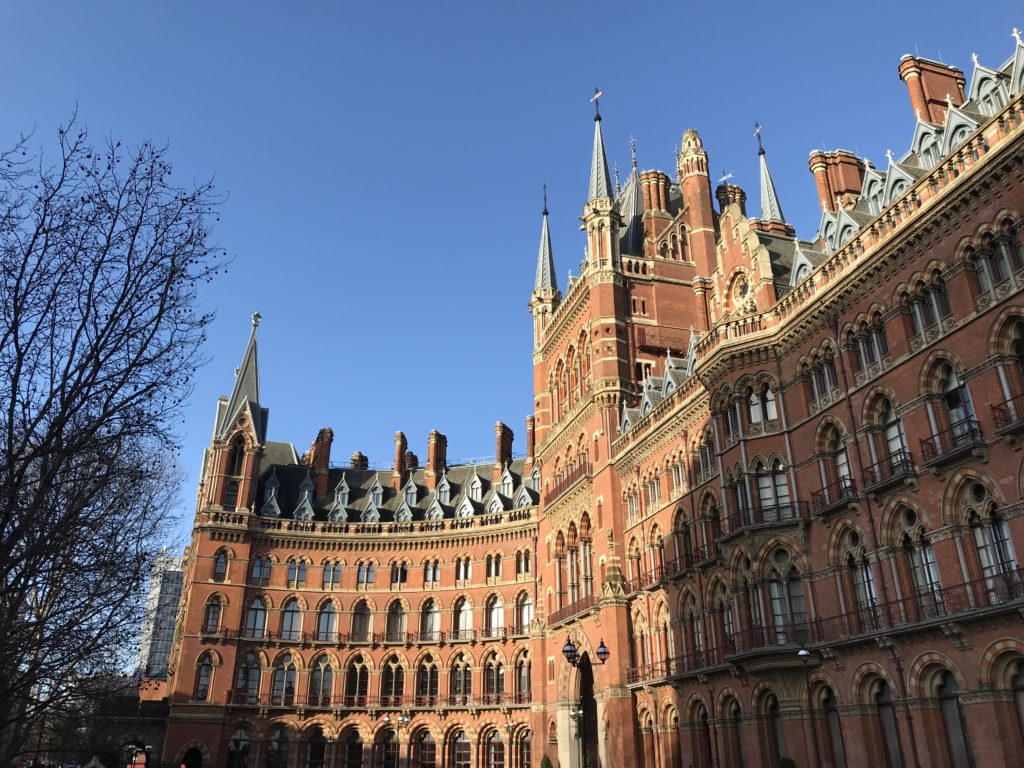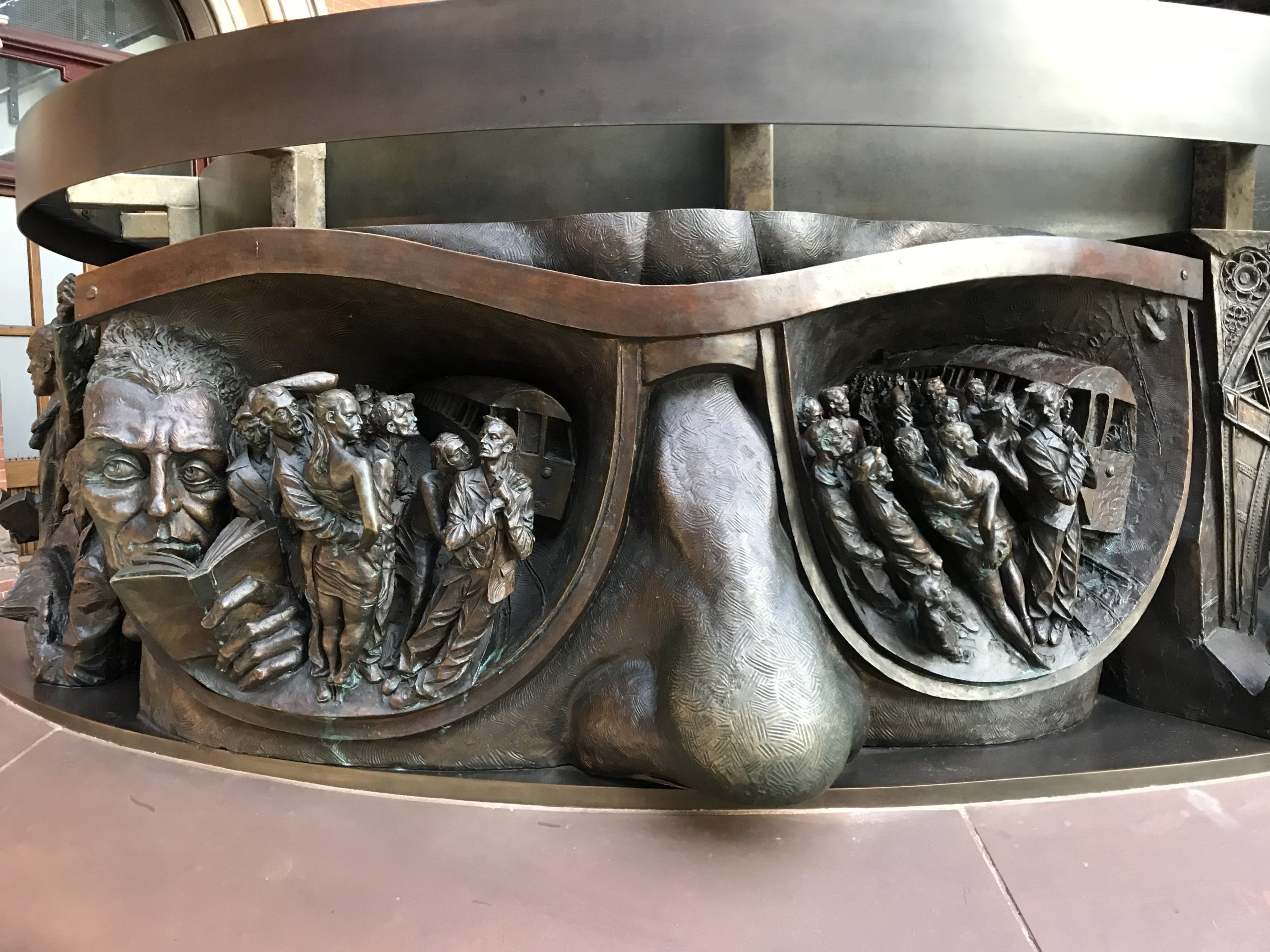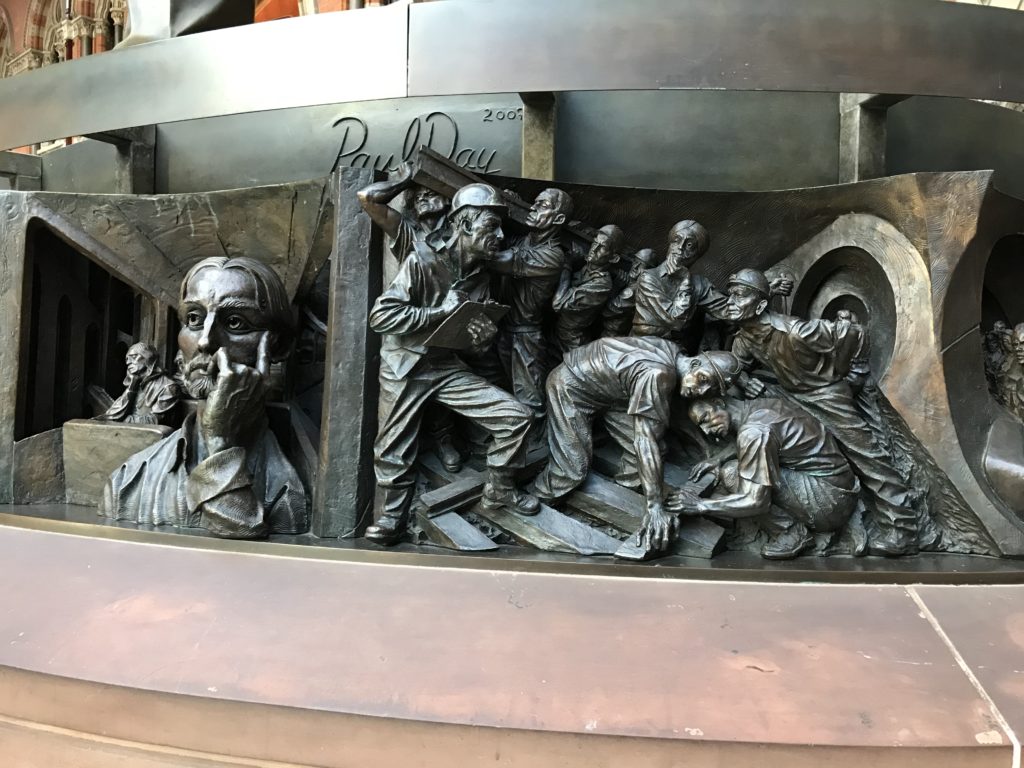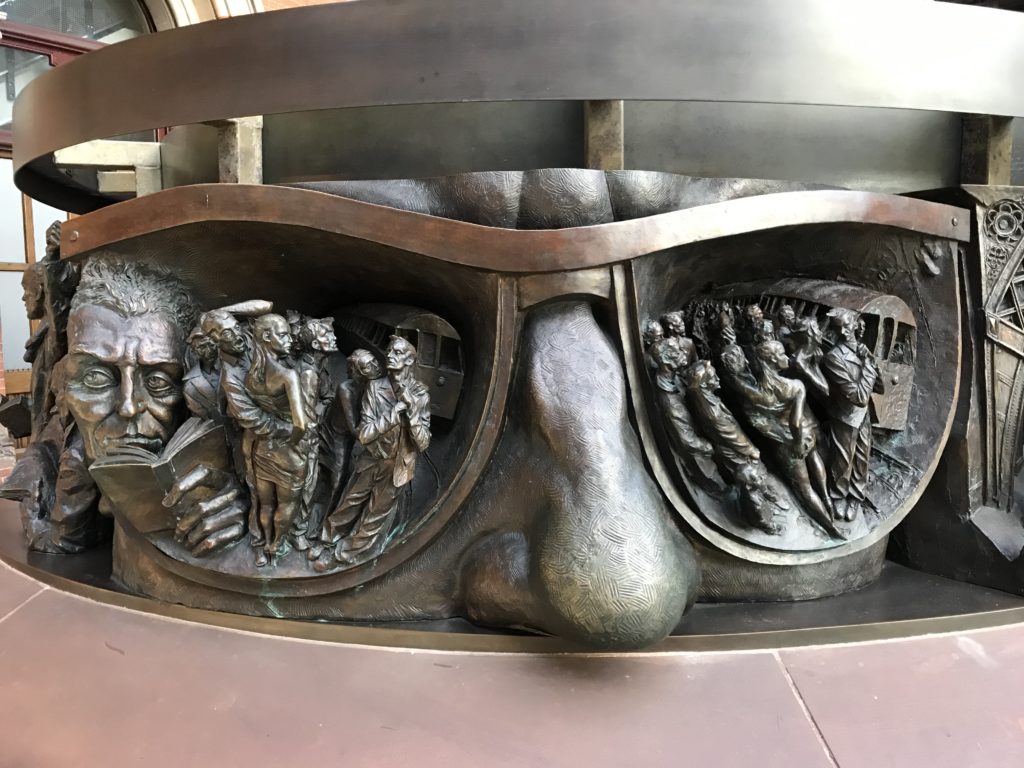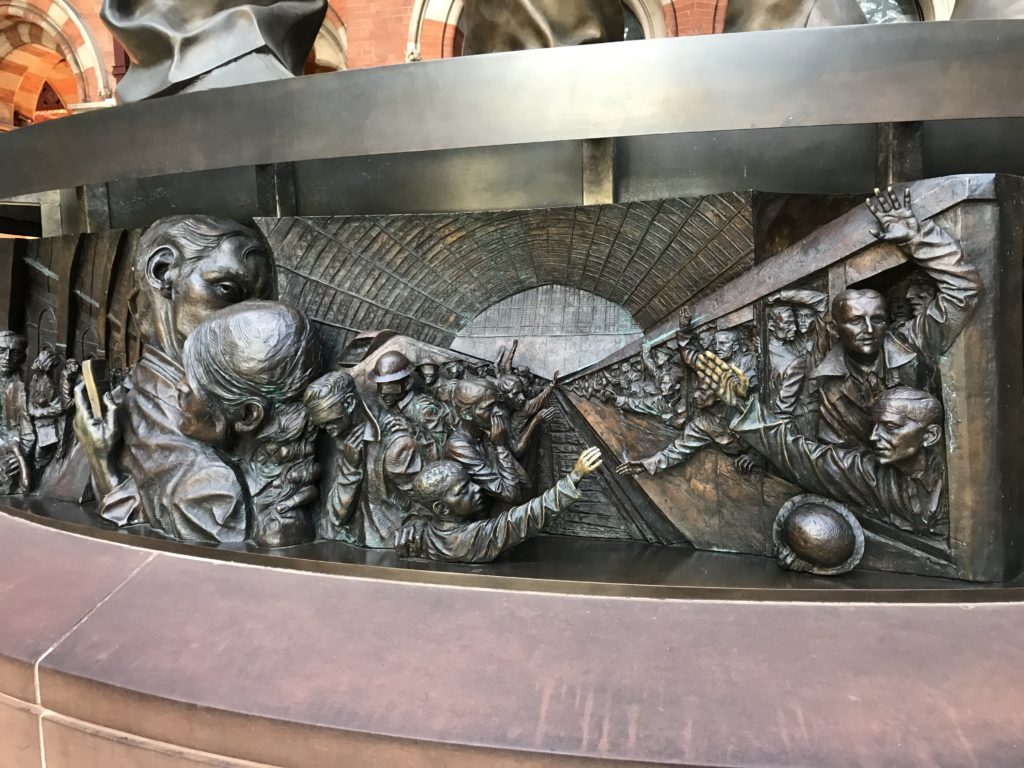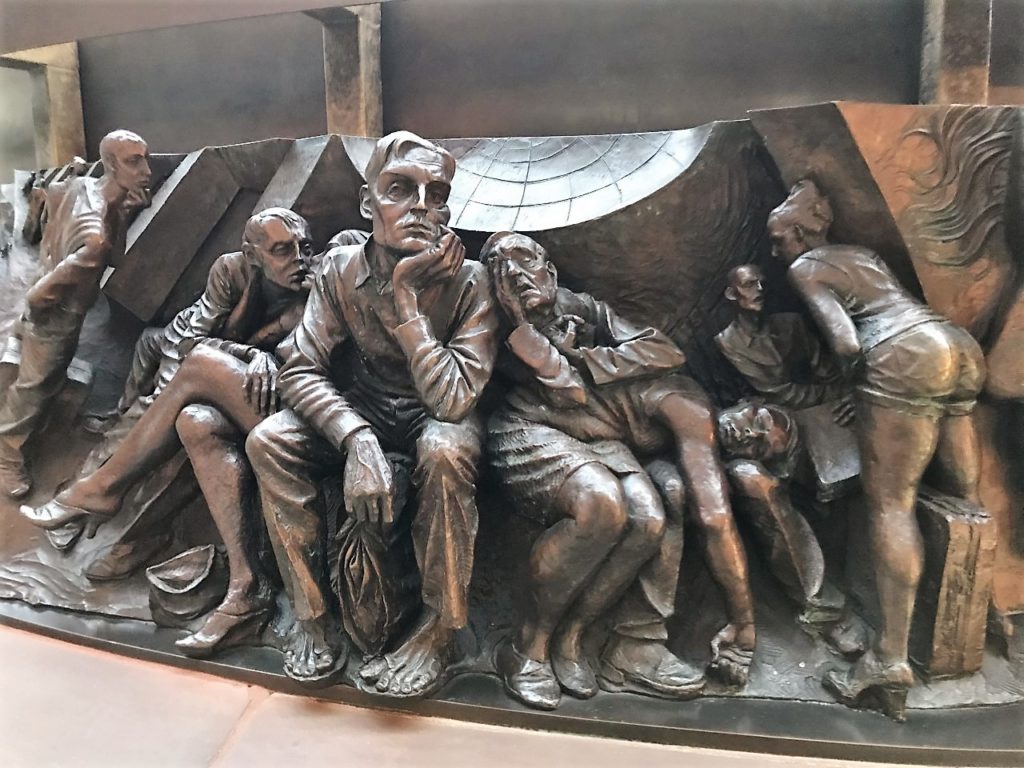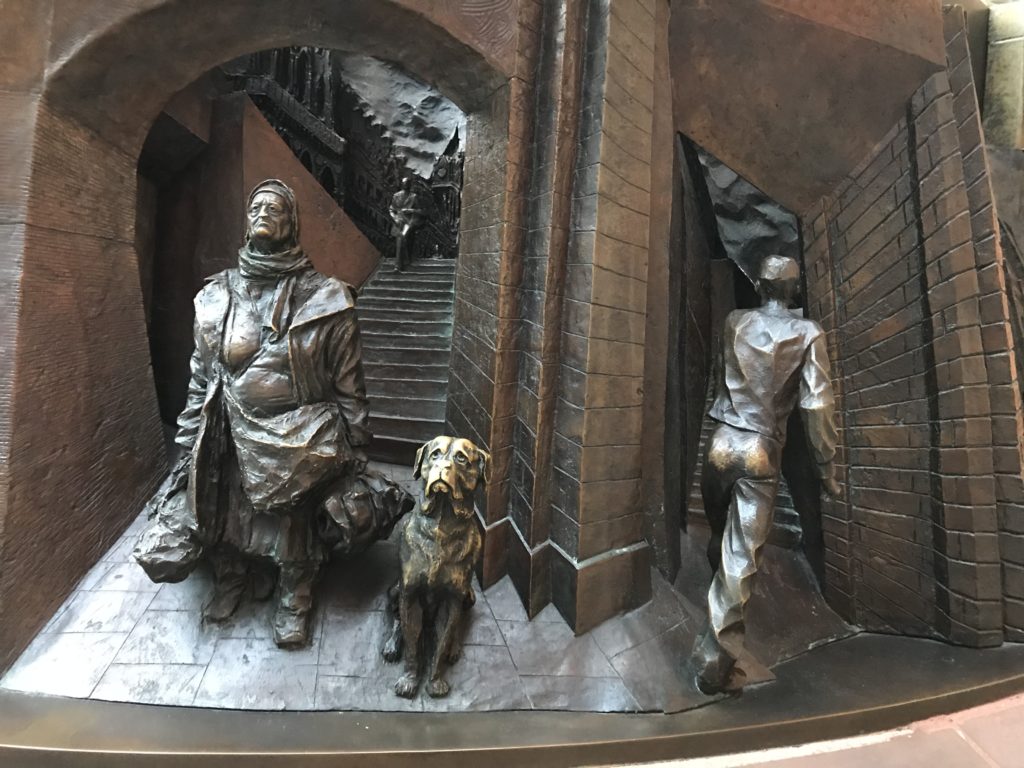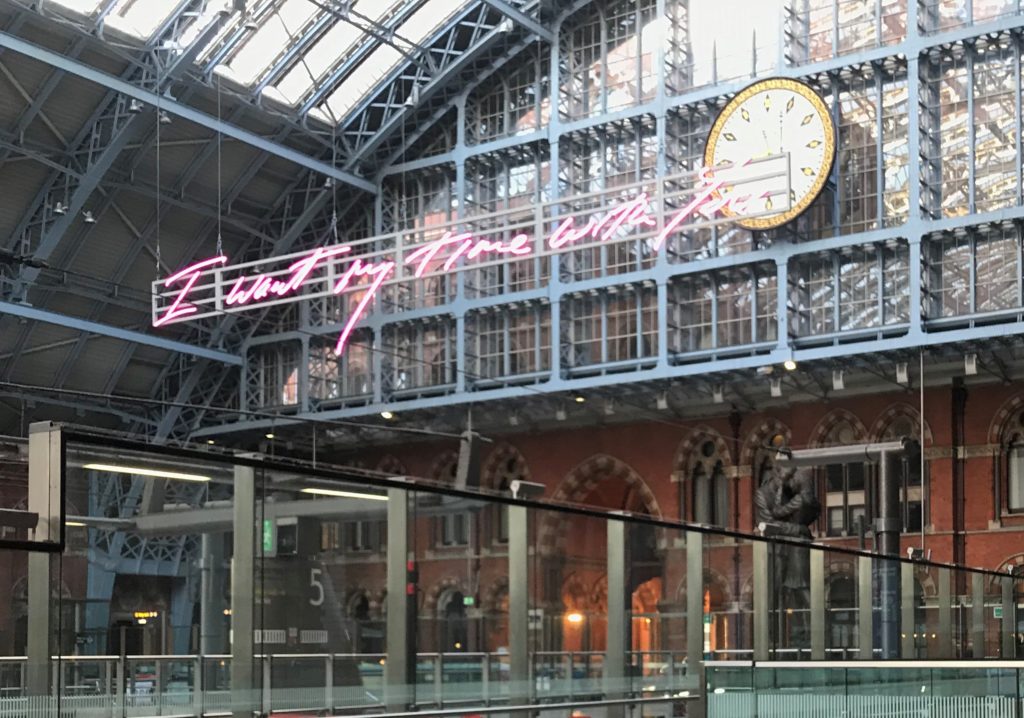St Pancras railway station in London was a marvel of Victorian engineering when the station opened in 1868 with the largest single span roof in the world constructed from iron and glass. The roof measures 689 ft (240 m) long, spans 245 ft (75m) with a height at 100 ft (30m).
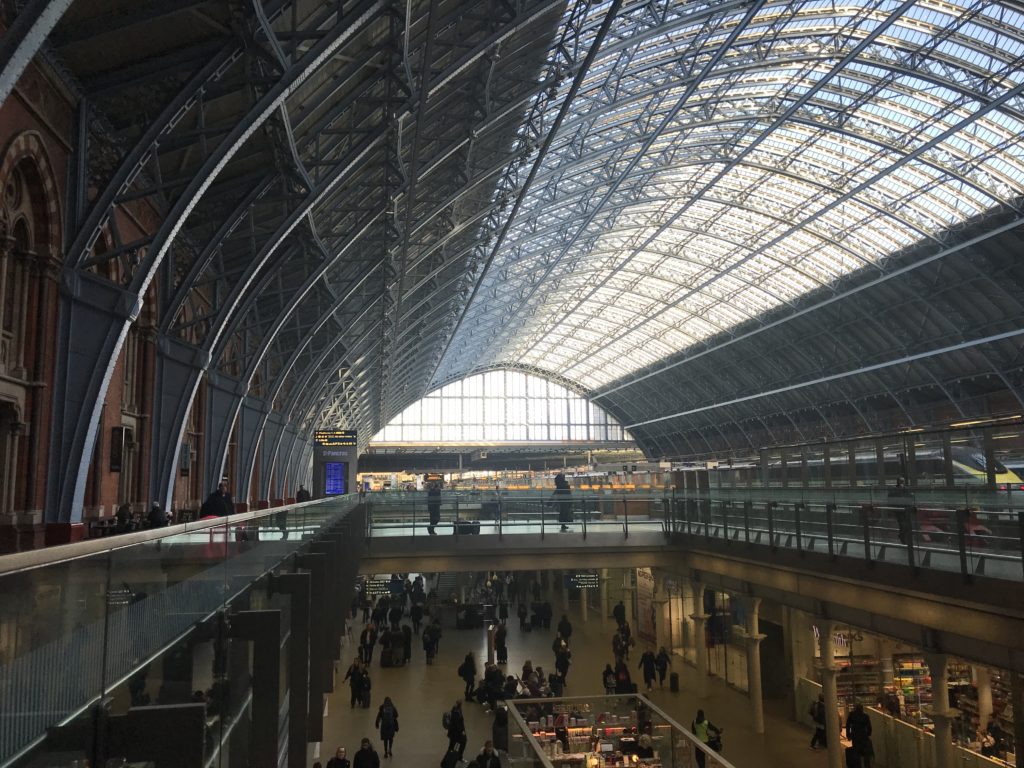
Midland Railway Company, formed in 1844, was one of many private railway companies modernizing the movement of coal and iron and commercial goods across a growing network of tracks across Great Britain, facilitating growth of the industrial age. Railway competition created an efficiency in the cost to move commercial goods and resources around the country. King’s Cross Station was built in 1855 as the London hub of Great Northern Railway, a competitor to Midland Railway Company. Great Northern Railway serviced London to York traffic. Midland Railway, headquartered in Derby, routed goods and passengers to King’s Cross from 1858. As both companies grew passenger and goods traffic, Midland Railway needed its own line all the way into London. In 1863 the Midland Railway bill was passed authorizing construction of a line between London and Bedford. Service to St Pancras Station began October 1, 1868.
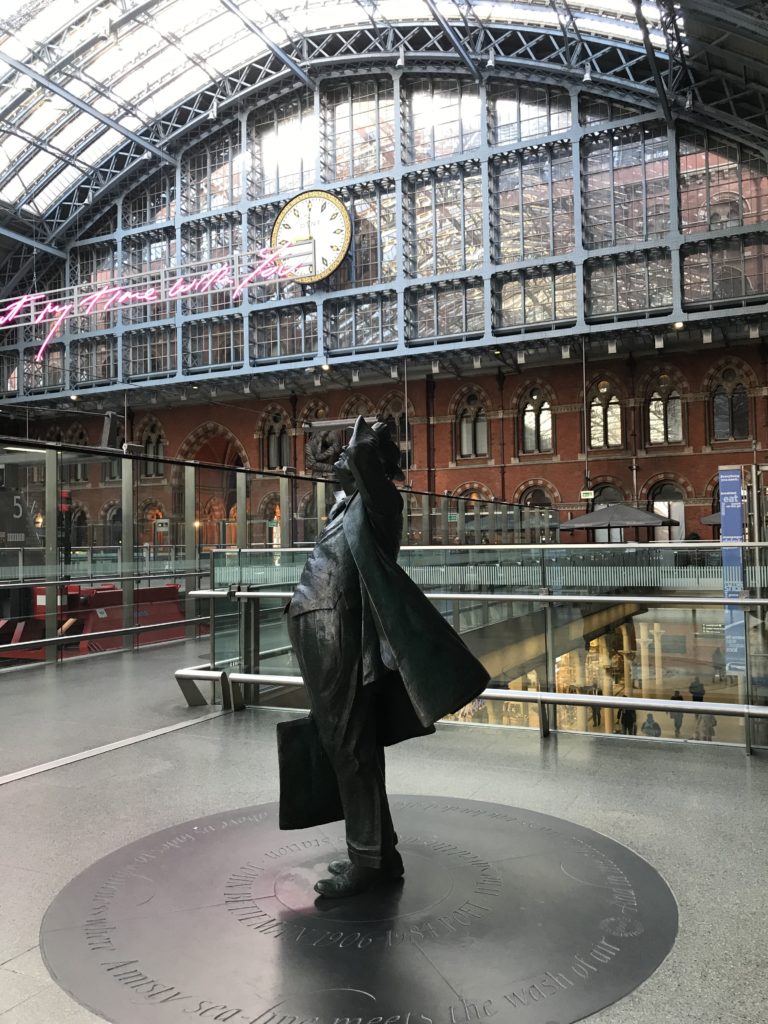
The Meeting Place
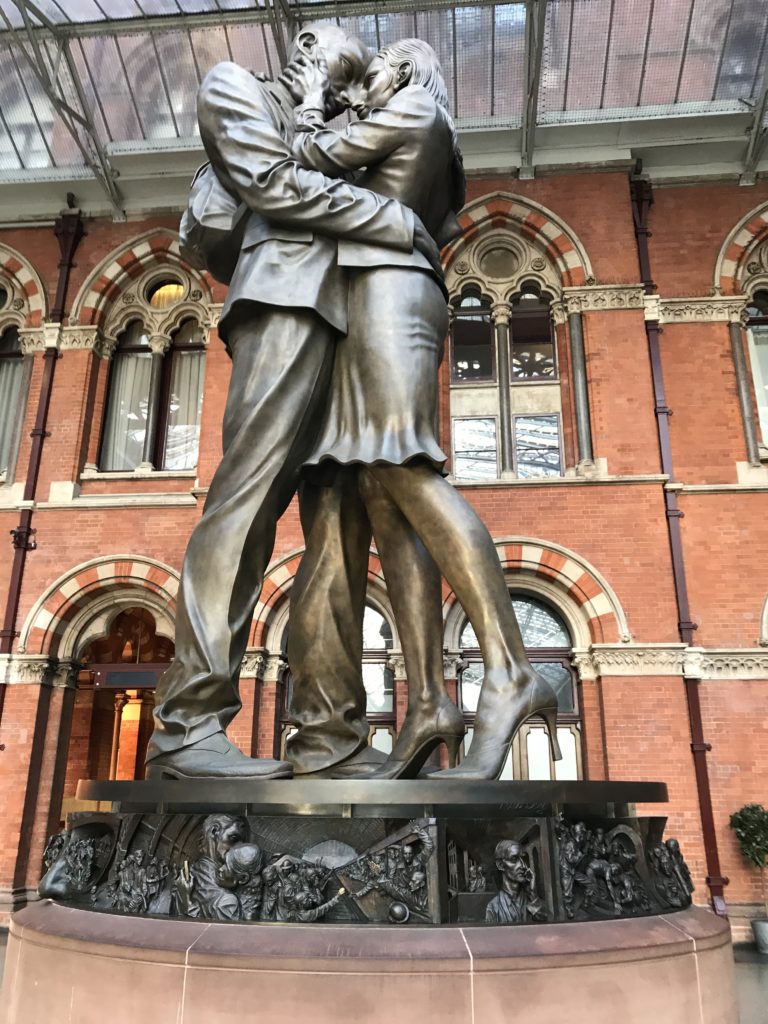
Artist Paul Day’s ‘The Meeting Place’ was apparently not well received as the centerpiece artwork for St Pancras Station when the 9m (30ft) bronze was unveiled in 2007. The frieze around the plinth was added in 2008. The frieze images are ones I found particularly captivating to examine in photos.
I Want My time With You
Artist Tracey Emin is known for messages written in her own script and projected in light, typically neon, but for St Pancras in pink LED. She says her message is actually one meant for Europe in the wake of the political and economic separation through Brexit. The Guardian – Tracey Emin sends a message of love to rest of Europe via St Pancras (April 10, 2018).
War Memorial
On the centennial of the end of World War One and the 150th anniversary of St Pancras Station in 2018, a subtle war memorial was unveiled simply listing the job titles of workers at St Pancras representing those workers who left to fight the wars.
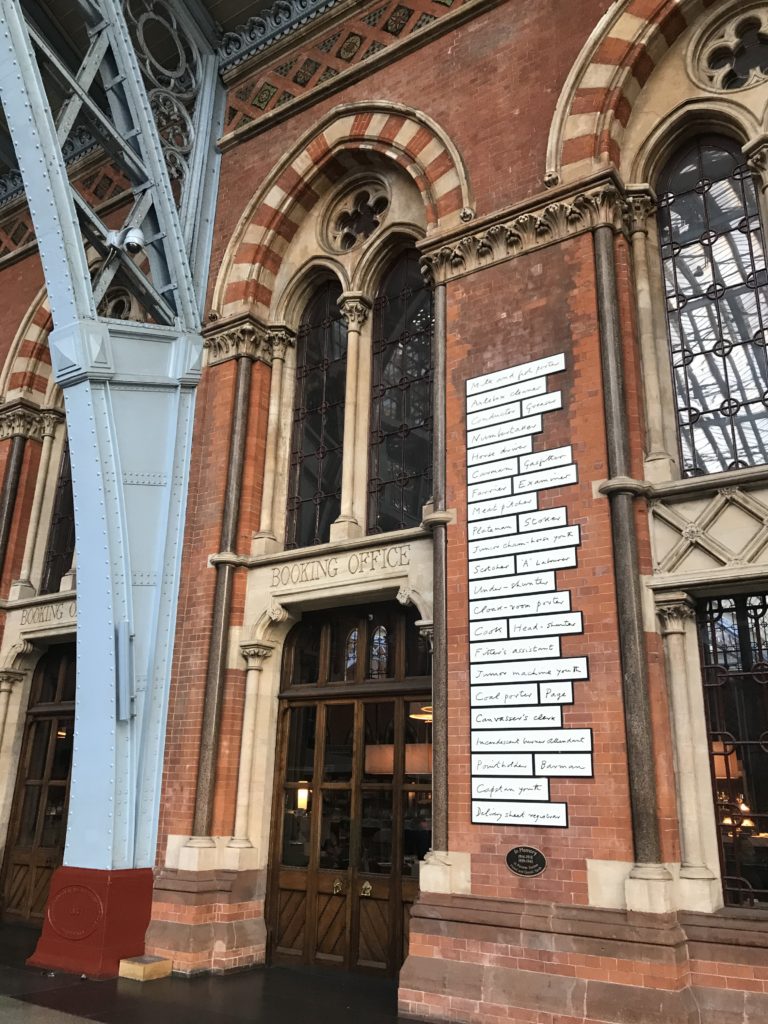
St Pancras website shows some close-up photos with descriptions of what the job duties were for these various positions.
The room on the other side of the wall is the St Pancras Renaissance Hotel dining room. This photo also provides a closer look at the iron trusses supporting St. Pancras glass roof.
St Pancras Clock
The original 1860s clock inside St Pancras was the largest clock in any British railway station. In the late 1960s it was decided to modernize the clock. When removing the clock, it fell and the slate face shattered. Roland Hoggard, a Midland train guard and railway clock collector purchased the pieces for £25 and transported them to his farm. He reconstructed the clock to hang on the end of his barn.
In need of a new clock for St Pancras Station, the decision was made to make casts of the clock fragments at Roland Hoggard’s farm. A replica clock was constructed using glass reinforced plastic. That clock remained in place until the early 2000s when St Pancras Station modernized to become an international rail station.
The current clock in St Pancras Station was designed by Dent, the makers of Big Ben and the standard clock of the Royal Observatory at Greenwich, and Smith of Derby, another clockmaker who supplied Midland Railway Company. The clock is a replica of the original 1860s clock using similar materials.
St Pancras Renaissance/Midland Grand Hotel Clock Tower
Arguably the most impressive piece of St Pancras Station is the accompanying hotel financed and constructed by the Midland Railway Company. The company called for hotel architectural submissions in 1865 for a 150-bed hotel. The original George Gilbert Scott design for a 300-room Victorian Gothic styled hotel was chosen by Midland Railway. Midland Grand Hotel opened in 1873 and was actually a curtailed construction eliminating one floor from the plan due to financial constraints. The original Midland Grand Hotel closed in 1935 due to health and safety standards. The building was used as railway offices until the 1980s when it was closed for fire safety regulations.
In the 1960s there were plans to demolish the hotel structure. A campaign to preserve the building succeeded in getting the structure listed for preservation. In 2011 the St Pancras Renaissance opened in the reconstructed space.
